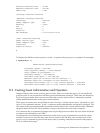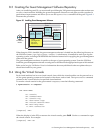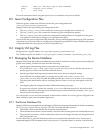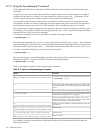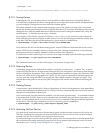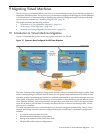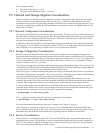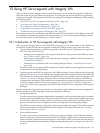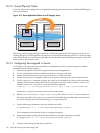
9 Migrating Virtual Machines
The hpvmmigrate command allows you to move a virtual machine from a source VM Host system to a
destination VMHost system. The hpvmmigratecommand is available withHP Integrity Virtual Machines
A.01.20 and later. For information about installing the optional VMMigrate bundle, which provides the
hpvmmigrate command, see “Installing Integrity VM” (page 21).
This chapter includes the following sections:
• “Introduction to Virtual Machine Migration” (page 111)
• “Performing a Guest Migration” (page 112)
• “Network and Storage Migration Considerations” (page 113)
9.1 Introduction to Virtual Machine Migration
Figure 9-1 illustrates the process of moving a guest from Host A to Host B.
Figure 9-1 Symmetric Hosts Configured for VM Guest Migration
The basic virtual machine migration configuration includes a source machine and a target machine. Both
must be running Integrity VM and must be able to run the guests. Both machines must conform to their
operating system requirements and restrictions, and both must be able to provide the allocated resources
to the guest. If the guest uses 2 GB of memory on one machine, it must be able to use that amount on the
other machine. Similary, if the source machine can provide a guest with four vCPUS, the target machine
must also be able to provide them. To modify the virtual devices or network on the target host, use the
hpvmmodify command.
To enable migration the source and destination hosts must be configured symmetrically. That is, all the
network and storage resources must be configured the same on both hosts. A symmetric configuration
includes:
• A common local area network (LAN)
• Identical network interfaces configurations
• Storage Area Network (SAN) based boot disks
• Identical Fibre Channel port configurations
9.1 Introduction to Virtual Machine Migration 111



